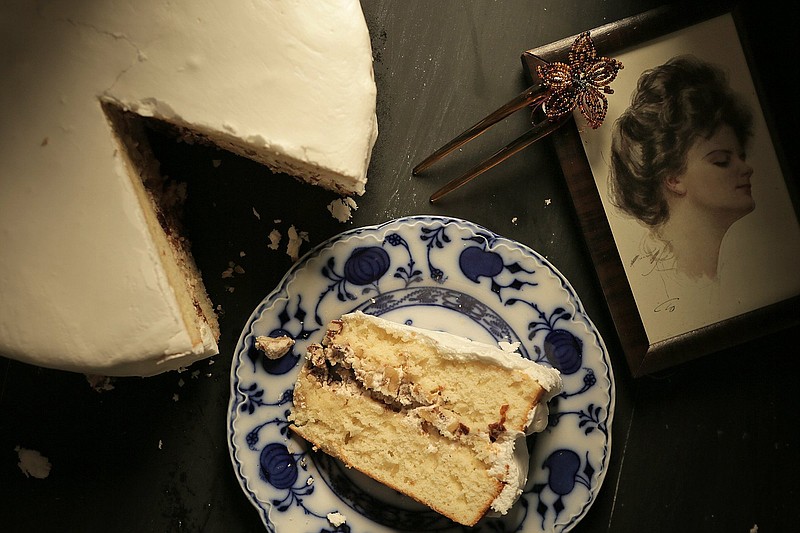It all comes down to this: Wealthy families ate cakes. Everyone else ate pies.
We are talking here about Americans in the 1700s and 1800s. The ingredients needed to make cakes were expensive, and cakes required considerable time and effort to make. Pies were faster and easier, and because their slices were portable they could be carried out into the fields.
This information comes to us from Micha Kornblum, a volunteer at Faust Park in Chesterfield, Missouri, who, along with Susan Lang, is giving a series of lectures about the history of cakes in America.
"The main ingredients in cakes have remained the same since the 1700s and before," said Kornblum, who is a retired teacher. But the same forces that shape nations have also shaped the development of cake: war, natural disasters, population booms and busts, new technologies and even pandemics.
In the 1700s, there was no baking soda or baking powder. To get their cakes to rise, cooks of that time had to use a branch from a peach tree - "they were very specific about using a peach branch," Kornblum said - to whip either egg yolks for about 15 minutes or egg whites for a full hour.
Or they could use the ash method, which was easier on the arms but riskier. Water poured through burned ashes of hardwood trees turns into a lye solution, which is highly alkaline. When mixed with an acid, such as lemon juice or vinegar, it forms bubbles of carbon dioxide. When the solution is added to a batter, the bubbles make the cake rise.
But there was a problem with this method, and not just that lye is highly caustic and can kill or disfigure you. The problem is that lye mixed with fat creates soap. Ordinarily that is desirable, but butter is a fat. When injudiciously used, lye made cakes taste like soap.
"That is why cakes with spices were popular," Kornblum said, citing gingerbread as an example. The spices helped mask undesirable flavors.
Flour at the time was locally grown and locally milled, which made it coarser than the flour of today; it was also what we now call whole-grain. Because the flour was coarser and heavier, the cakes would not rise as much as they do now, so they were denser and also crumblier. And because refined sugar was unknown at the time, cakes had to be sweetened with brown sugar, molasses, honey or maple syrup.
With the 1800s came Manifest Destiny, the national belief American settlers were guided by God to expand their territory across what is now the continental United States. Americans poured west by the millions, aided by the expansion of railroads and the improvement of roads.
People were meeting and sharing ideas with more folks than ever before. Increasingly, these people were coming from other countries with their own traditions of baking cakes. Ideas were shared, recipes were mingled, Kornblum said.
The improved transportation also meant flour could be shipped to large, modernized mills capable of grinding flour finer than ever before. That flour could then be sent all across America.
Cakes became lighter and rose higher, especially toward the end of the century, when flour began to be bleached. Bleached flour is finer and softer than unbleached, yielding more elegant baked goods. Cakes moved closer to what they are today.
Cane sugar was more available, too, for most of the century. It came in from Africa and the Caribbean as part of the slave trade, and also began to be grown on plantations in the South. But when it was refined, it was still pricier than other sweeteners.
"If you have the money and don't object to the slave aspect, there is white sugar," Kornblum said.
Sugar beets started to be grown in the 1800s, too, first in Europe and then, after a few fits and starts, in the United States.
But with the Civil War, sugar became hard to find. The Northern blockade of Confederate ports kept out cane sugar from the Caribbean, and the sugar plantations in the South had trouble finding enough labor during the war to harvest it.
"There are always substitutions," Kornblum said. "Honey would make your cake denser and moister, but you would recognize it as cake. People are rather clever. They will find a way."

